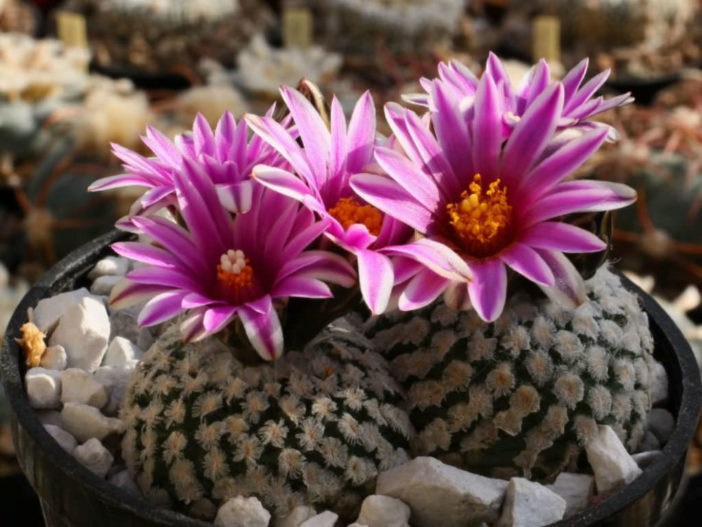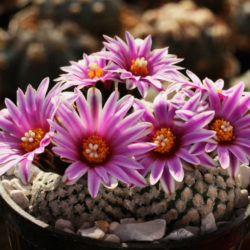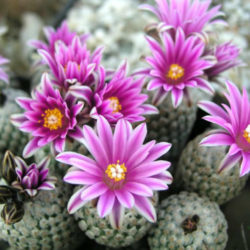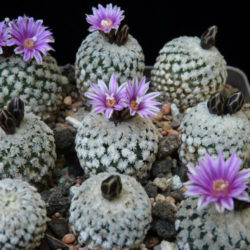Scientific Name
Turbinicarpus valdezianus (H.Moeller) Glass & R.Foster
Synonym(s)
Echinocactus valdezianus, Gymnocactus valdezianus, Mammillaria valdeziana, Neolloydia valdeziana, Normanbokea valdeziana, Pediocactus valdezianus, Pelecyphora valdeziana, Thelocactus valdezianus
Scientific Classification
Family: Cactaceae
Subfamily: Cactoideae
Tribe: Cacteae
Genus: Turbinicarpus
Description
Turbinicarpus valdezianus is a dwarf cactus with a green, usually solitary stem with hatchet-shaped tubercles arranged in spiral rows and almost completely covered by short pectinate spines. The stem is at first spherical, becoming cylindrical with age, with a depressed apex. It grows up to 2 inches (5 cm) tall and 0.8 inches (2 cm) in diameter. Each areole bears about 25 to 30 distinctive white radial spines that spread horizontally, forming small umbrellas on the tips of the tubercles. Unlike some other species, this species lacks central spines.
Flowers have lance-shaped, pinkish-white to bright pink petals with a darker magenta or reddish-brown midrib. They are funnel-shaped, up to 1 inch (2.5 cm) long and 1.2 inches (3 cm) in diameter, and appear from late winter to early spring. Fruits are spherical to barrel-shaped, dark greenish-brown, and contain tiny dark brown seeds.
Origin
Turbinicarpus valdezianus is native to Mexico. It grows on limestone soil in Coahuila and San Luis Potosí.

Hardiness
USDA hardiness zone 9b to 11b: from 25 °F (−3.9 °C) to 50 °F (+10 °C).
How to Grow and Care
Turbinicarpus prefer to be in full sun and a well-ventilated position to maintain a good body color and spinal development.
The golden rule regarding watering is "never water when the compost is still damp." This is the one error that will certainly kill any plant! Watering should commence in the spring, depending on the weather conditions. The plants should initially be given a light spray to gently encourage them into growth.
These cacti can withstand high summer temperatures and benefit from being accompanied by good ventilation. Do not be tempted to overcrowd the plants. They will be far happier with a bit of space to allow the air to circulate. Winter temperatures can be set as low as 44-46 °F (7-8 °C), providing the plants are kept dry and the humidity levels are also kept low by good ventilation on bright days.
See more at How to Grow and Care for Turbinicarpus.
Varieties
Links
- Back to genus Turbinicarpus
- Succupedia: Browse succulents by Scientific Name, Common Name, Genus, Family, USDA Hardiness Zone, Origin, or cacti by Genus
Photo Gallery
Click on a photo to see a larger version.


